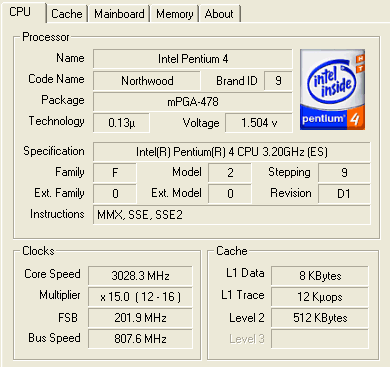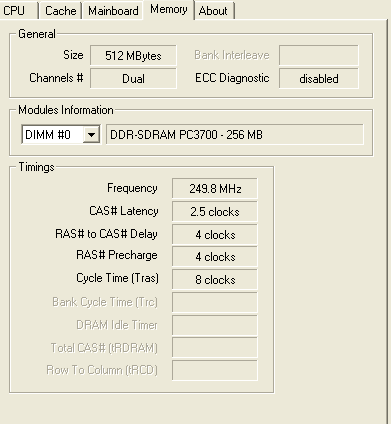System setup and notes
Basic setup
- Intel Pentium 4 3.2GHz ES (12 - 16x)
- DFI LAN PARTY PRO875 i875P motherboard
- Albatron GeForce4 Ti 4200
- OCZ 2x 256MB PC3700 EL-DDR dual-channel memory kit
- Corsair 2 x 256MB PC3500 C2 memory kit
- Intel enhanced cooler
- IBM 40GB 7200 RPM hard drive
- Samsung 181T TFT
- Samcheer 420w PSU
Software
- Windows XP Professional Build 2600.xpclient.010817-1148
Notes
It's always a little difficult to benchmark memory that doesn't conform to any stock CPU FSB. AMD and Intel finally moved on to 200FSBs a couple of months ago. Now enthusiast memory manufacturers want to stay one step ahead of the game by releasing non-standard memory. We're fortunate enough to be in possession of a semi-unlocked Pentium 4 3.2GHz CPU. We've already mentioned that these OCZ modules work best at high MHz and relatively high latencies. Therefore, with the benefit of an unlocked CPU, we can attempt to discern just what form of advantage we accrue from running higher MHz (233MHz) vs. low latency timings (202MHz - 2-6-2-2), with both being run at similar CPU MHz. In this way we can decide whether one is preferential to another.
What we'll do, therefore, is have the OCZ modules run at 232.7FSB with a 13x multiplier. This gives us an overall running speed of 3024.8MHz. The most important aspect to remember is that the modules will run at 2-7-3-3 timings, as shown below. This would represent a reasonably overclocked 2.6 C with synchronous RAM.


To even up the CPU MHz and still retain a ~ 200FSB ( stock) the 3.2GHz ES will be run at 15 x 202FSB. These settings would represent a stock-ish 3.0 C.

The other difference this time is the 2-6-2-2 low latency timings used.
What this all boils down to is whether having a higher CPU FSB and memory MHz (232.7MHz each for OCZ) is better than having a lower FSB and RAM MHz (201.9MHz each for Corsair XMS3500). Of course it is, I hear you say. But wait, there's more. The higher MHz for the OCZ will undoubtedly be offset by its higher latencies. The OCZ modules specify a tRCD of 3 clocks. We've seen just what an effect a tRCD of 2 clocks has on performance.
Essentially what we're trying to compare is just how much extra performance one gains from having 31MHz more on the CPU and memory's FSB, assuming a relatively equal overall CPU speed. The gains should be obvious, but they will be tempered heavily by the lower latencies of the Corsair set. I hope you're still awake after the last few paragraphs.
Lastly it must be noted that we're using a GeForce4 Ti 4200 for the games testing. Our usual ATi Radeon 9800 Pro unexpectedly died during benchmarking.
It must also be noted that we're almost doing these OCZ modules a disservice by running them on the DFI LAN Party motherboard. Its maximum 2.7v DDR voltage is below the 2.75v specified by OCZ. That's where some motherboards could run into difficulties. We were especially pleased to see the OCZ twins run at DDR466 @ 2-7-3-3 with less voltage than specification. Knocking down the timings to 2.5-8-4-4 gave us a benchable DDR-500 speed for the first time.

It's perplexing as to how CPU-Z v1.18 picks up the name here but doesn't do so on the stock screenshot. DDR500 speeds with 'only' 2.7v, you bet. We look forward to pairing these sticks off against Corsair's upcoming PC3700 RAM. All we can say right now is that they will surely be a tough act to follow.









